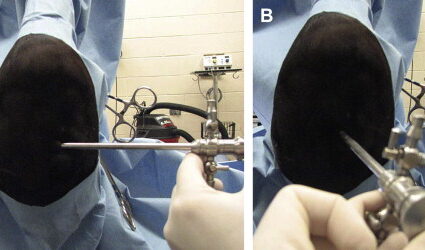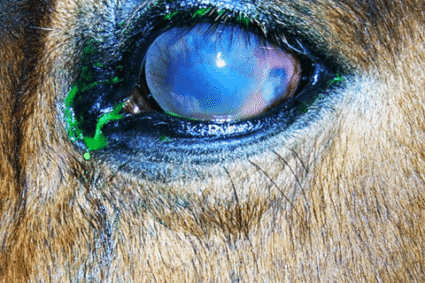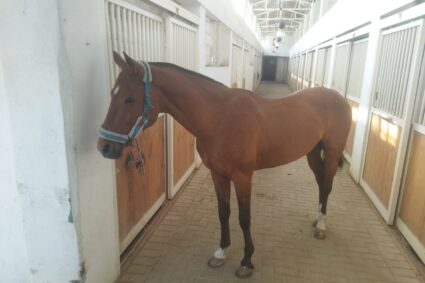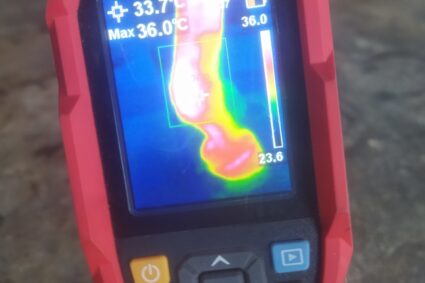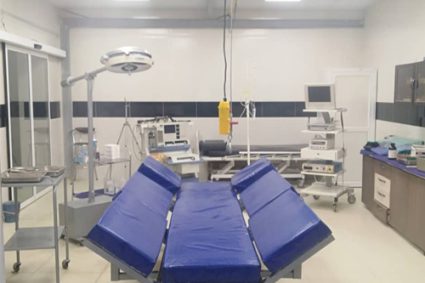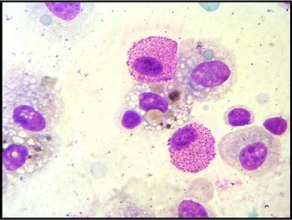
Emergency Care
7 Days a Week, 24 Hours a Day
- Colic: Indications your horse maybe colicking include pawing the ground, curling their upper lip, inappropriate sweating, looking at their side, urinating small amounts several times or stretching out, lying down, and rolling. If possible take your horse’s temperature, heart rate, and respiratory rate. It may be advisable to walk your horse until the veterinarian arrives.
- Lacerations: Cuts or open wounds are best treated as quickly as possible. Ideally try and identify the location of the wound, the size of the wound, and the horses overall condition. If you see continuous bleeding please apply direct pressure, otherwise attempt to protect the wound until the veterinarian arrives.
- Sudden lameness: Signs include your horse not able to bear weight on one or more legs, unwillingness to move, or appears very tender footed. It important not to move the horse and to look for obvious swelling, heat, pain to the touch, or digital pulses in the affected leg(s). Look at your horse’s foot for nails or other foreign objects penetrating into the sole, frog or heel bulbs. If you find a nail, do NOT remove it unless directed by the veterinarian.
- Not eating: You may observe your horse dropping feed, chewing abnormally, not finishing their feed normally, drooling excessively, or they have a foul odor coming from their mouth. There are several indications for these clinical signs that would require emergency care.
- Nasal discharge: Evaluate the character of nasal discharge. Look for color: clear, white, red, green or yellow. Determine if the discharge has a bad smell or if it looks like feed material mixed with saliva. Observe if its from both nostrils or just one nostril, if your horse has a cough, and if your horse appears distressed. Please take your horse’s temperature, remove all feed if your horse appears choked and contact a veterinarian immediately.
- Eye Trauma: Signs can include your horse’s upper and/or lower eyelids being swollen, tears or discharge coming from the eye, or squinting. Place a fly mask on your horse until a veterinarian arrives.
- Lameness: While your horse may or may not appear lame, one or more legs may have become swollen. Be sure to take your horse’s temperature, feel the limb for heat, assess if the limb is painful to the touch, and look for scabs or cuts on the swollen leg.
- Allergic reaction: Signs may include: Hives, large areas of swelling on the body, swollen nose, or swollen eyes.
Equine Reproductive Services
- Breeding soundness exam is recommended before breeding. This examination of your mare’s reproductive tract can improve reproductive success.
- Reproductive ultrasound examination of internal reproductive tract can aid in identifying proper timing of breeding (artificial insemination or live cover), any abnormalities of the tract, to determine pregnancy and identify a twin pregnancy.
- Post Breeding: Ultrasound examination
- At day 14–15: Confirm pregnancy and identify twins
- At day 30: Evaluate for a heartbeat
- At day 45: Ensure normal development of the embryo
- Post Breeding: Ultrasound examination
- Uterine culture and sensitivity is utilized to diagnose infection and identify an effective antimicrobial (antibiotic) for treatment.
- Uterine biopsy reveals histological defects in the uterine wall that may inhibit implantation of the embryo and a successful pregnancy.
- Artificial insemination allows us to breed your mare with fresh-cooled semen
Pre-Purchase Exams
Horses are a big financial and emotional investment. We strongly recommend a pre-purchase exam prior to acquiring any horse, whether it will be used for performance or pleasure. Pre-purchase exams (PPE) are routinely performed by the Vets in Tehran Equine Hospital for a large variety of equine disciplines. This exam will determine if the horse is physically suitable for its intended use, regardless of level.
PPE consists of a thorough physical exam, conformation analysis, and lameness examination. The veterinarian may want to observe the horse being ridden as well, so please plan for tack and a rider to be available if possible. Examinations can be complemented by our advanced diagnostic equipment, including digital radiography, digital ultrasonography, upper airway endoscopy, nuclear scintigraphy, and complete laboratory services. Any diagnostic images collected during a PPE are digital, archived, and can be easily shared with other veterinarians if needed.

